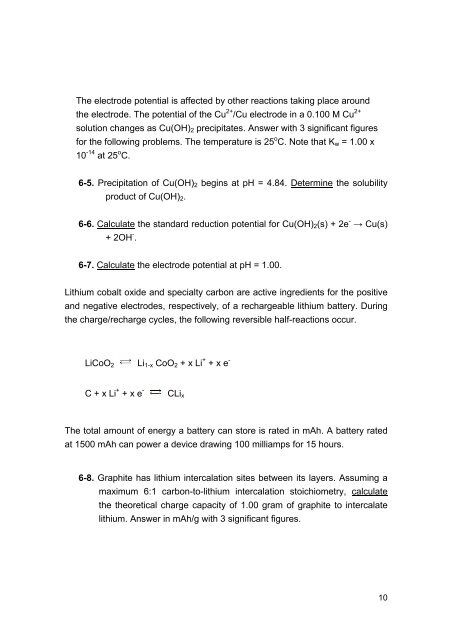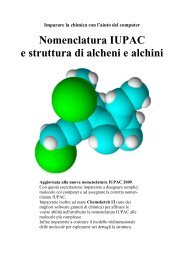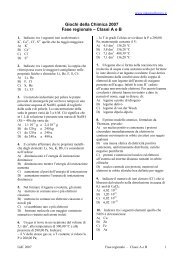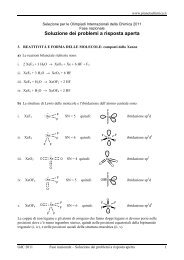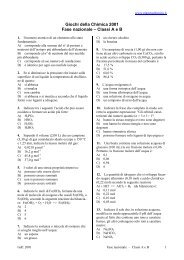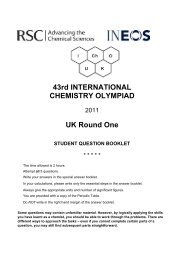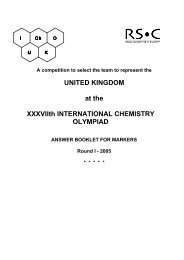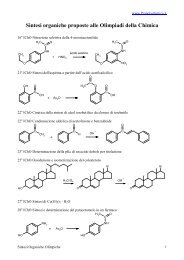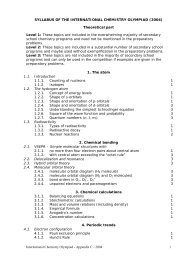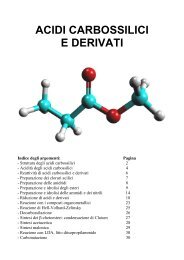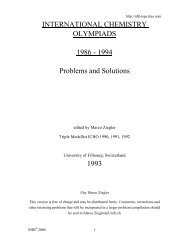Theoretical Test
Theoretical Test
Theoretical Test
You also want an ePaper? Increase the reach of your titles
YUMPU automatically turns print PDFs into web optimized ePapers that Google loves.
The electrode potential is affected by other reactions taking place aroundthe electrode. The potential of the Cu 2+ /Cu electrode in a 0.100 M Cu 2+solution changes as Cu(OH) 2 precipitates. Answer with 3 significant figuresfor the following problems. The temperature is 25 o C. Note that K w = 1.00 x10 -14 at 25 o C.6-5. Precipitation of Cu(OH) 2 begins at pH = 4.84. Determine the solubilityproduct of Cu(OH) 2 .6-6. Calculate the standard reduction potential for Cu(OH) 2 (s) + 2e - → Cu(s)+ 2OH - .6-7. Calculate the electrode potential at pH = 1.00.Lithium cobalt oxide and specialty carbon are active ingredients for the positiveand negative electrodes, respectively, of a rechargeable lithium battery. Duringthe charge/recharge cycles, the following reversible half-reactions occur.LiCoO 2 Li 1-x CoO 2 + x Li + + x e -C + x Li + + x e -CLi xThe total amount of energy a battery can store is rated in mAh. A battery ratedat 1500 mAh can power a device drawing 100 milliamps for 15 hours.6-8. Graphite has lithium intercalation sites between its layers. Assuming amaximum 6:1 carbon-to-lithium intercalation stoichiometry, calculatethe theoretical charge capacity of 1.00 gram of graphite to intercalatelithium. Answer in mAh/g with 3 significant figures.10


